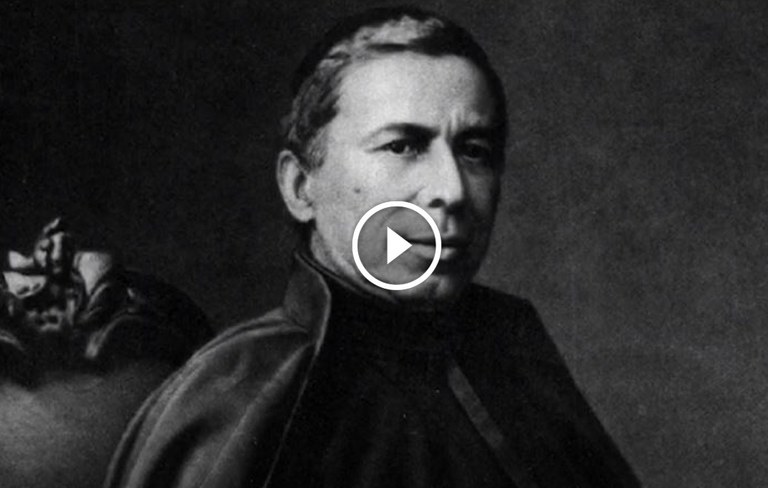Father Angelo Secchi
Historical notes
Angelo Secchi was born in Reggio Emilia June 28, 1818 in a small house in Via Porta Brennone. He was the son of Giacomo Antonio and Luigia Belgieri, last-born of a large family, of modest social background. After completing the elementary school, he was sent to Reggio Emilia gymnasium, directed by the Jesuits and, after completing his studies, he permanently entered the Society of Jesus. From 1849 to 1878 he was director of the astronomical and meteorological observatory of the Collegio Romano and worked on magnetism, meteorology (whose study had been investigated by Secchi during his stay in Washington with Commodore FM Maury) and geodetic measurements. As an expert of the Papal States he had to deal with aqueducts, health, climate and electricity. In the meteorological field, a great stir in the world was caused by the mechanism, exhibited and awarded in the 1867 Paris Universal Exposition, called the "Meteorograph". This instrument allowed remote recording of temperature, pressure, humidity, wind direction, wind speed and amount of rain. He was rewarded by Napoleon III himself, who named him Officer of the Legion of Honor. In general his studies and research ranged many fields, from astronomy to physics, from meteorology to geodesy.
The preponderant part of his work concerned astronomy. In astronomy he observed double stars, nebulae, planets and comets, he studied the sun, noting the number, the movement and the appearance of sunspots and protuberances. Applying physics to astronomy, he examined the spectra of more than 4,000 stars and came to group them into four classes or types - strong, long and very laborious work, which constitutes a milestone in the history of astrophysics. He performed many tasks of public utility, including the service of the exact time to the city of Rome, the measure of the geodetic base on the Appian Way for the triangulation of the Papal State and of the Kingdom of Naples; he contributed to the definition of the geodetic point of Monte Mario, used to define the first meridian of Italy and participated in Paris to the Commission for the definition of the standard metre, representing the Holy Seat. Among his publications are "The Unity of Physical Forces" (1864), "Le Soleil" (1870), "The Stars" (1877).
Today his name is borne by an asteroid, a mountain, a 35-km crevice and a 22-km-long crater on the Moon and a 234-km diameter crater on the planet Mars. Its name is also associated with the definition of the Rome Meridian (or Monte Mario Meridian), also called First meridian of Italy. He died in Rome, February 26, 1878
Bicentenary of Angelo Secchi, the father of astrophisics






